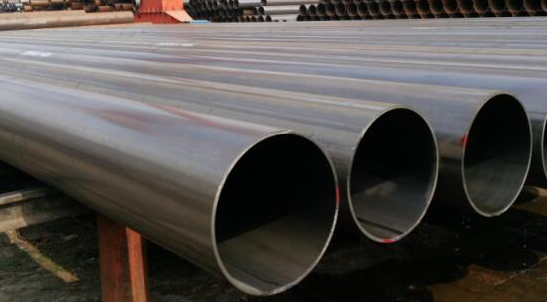
ERW Metal Tube Grades and Specifications
Grades of ERW tube:
ERW steel tube is available in a variety of grades to meet the different requirements of different applications. Selecting the appropriate grade depends on factors such as intended use, operating conditions and environmental factors. Some common ERW tube grades include:
(1) ASTM A53 Grade A/B
ASTM A53 Grade A/B grades are widely used in general structural and pressure applications. It is suitable for welding, bending and flanging and is suitable for various construction and engineering purposes. ASTM A53 Grade B ERW is more popular than other grades. These pipes can be bare without any coating, or they can be hot dipped or galvanized and manufactured through welding or seamless manufacturing processes. In the oil and gas sector, Grade A53 pipe is used in structural and non-critical applications.

(2) API 5L Grade B/X42
API 5L is a standard specification for line pipes that specifies the manufacturing process, chemical composition, mechanical properties and other requirements for seamless and welded steel pipes. API 5L Grade B and X42 are commonly used in the natural gas and oil industries to transport gas, water and oil. In addition, ERW line pipes include X46, X52, X56, X60, X65, X70, etc.
(3) ASTM A135
This specification covers two grades of electric resistance welded steel pipe used for conveying gas, steam, water, or other liquids. It is commonly used in fire sprinkler systems due to its high corrosion resistance and pressure resistance.
(4) ASTM A178
ASTM A178 ERW is widely used as a grade for boiler tubes and heat exchanger tubes. It has good surface quality and excellent mechanical properties, making it suitable for high temperature and high pressure applications.
(5) EN10217
This European Standard specifies the requirements for longitudinally welded steel pipes for pressure. Including P195, P235, P265 and other grades, suitable for different pressure levels and temperatures.
Specifications of ERW tube:
Specifications for ERW tubes cover a wide range of parameters that define their physical, chemical and mechanical properties. These specifications are critical to ensuring that pipes meet required standards and performance standards. Some key specifications of ERW steel pipe include:
(1) Size range
ERW tube is available in a variety of sizes, typically ranging from 1/2 inch to 24 inches in diameter. Depending on application requirements, wall thickness can range from standard wall thickness to extra-thick wall thickness.
(2) Material composition
The material composition of ERW tubes is specifically specified to ensure the required mechanical properties and corrosion resistance. Commonly used materials include carbon steel, stainless steel, and alloy steel, with special emphasis on the chemical composition of the base metal and any other elements added to enhance performance.
(3) Surface treatment
The surface finish of ERW tubes is specifically specified to ensure smoothness, uniformity and freedom from defects. This includes parameters such as scale, pits and laminations, which affect the overall performance and appearance of the pipe.
(5) Testing and inspection
ERW piping codes include provisions for testing and inspection to verify compliance with specified requirements. This may involve non-destructive testing methods such as ultrasonic testing, electromagnetic testing or hydrostatic testing to assess the quality and integrity of the weld and base metal.
(6) End surface treatment
The specification also details the type of end processing allowed for ERW tube, such as plain, beveled, or threaded ends, depending on the intended installation and connection mode.
Read more: Types and Uses of Welded Steel Pipes
- 【Prev】 : What is ERW in Pipe?
- 【Next】 : What is Seamless Tubing?


